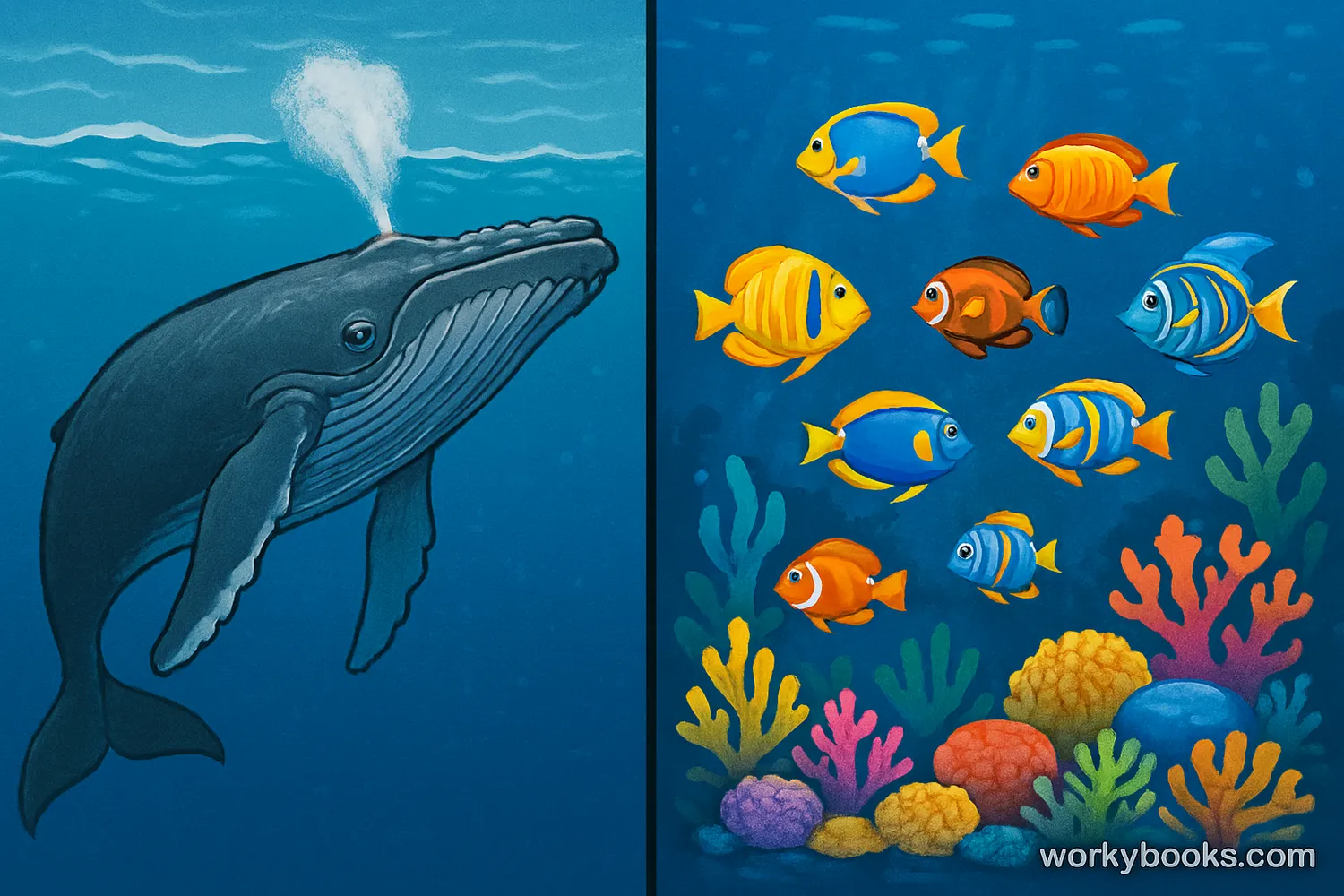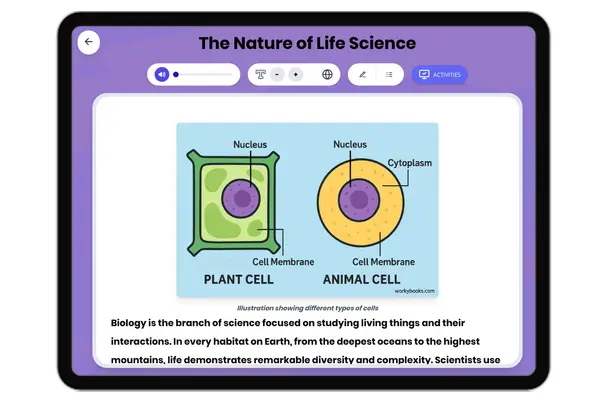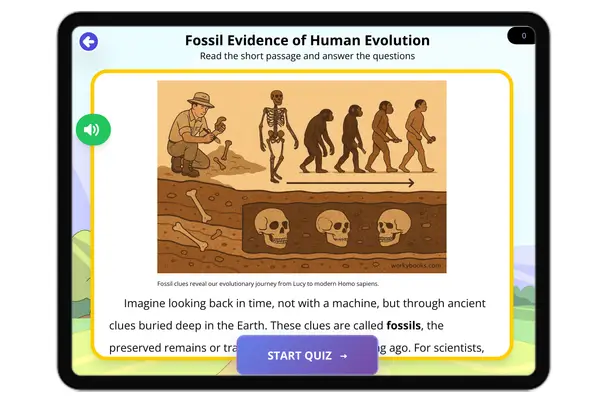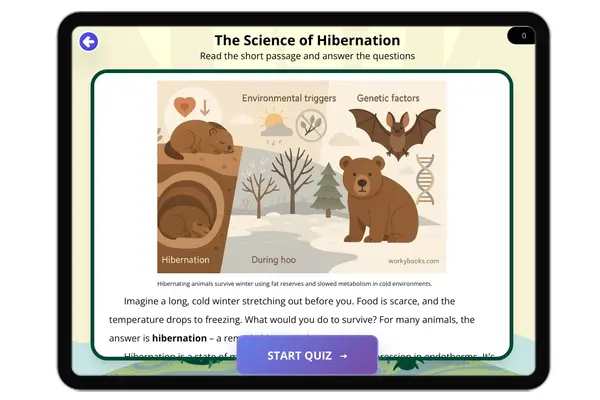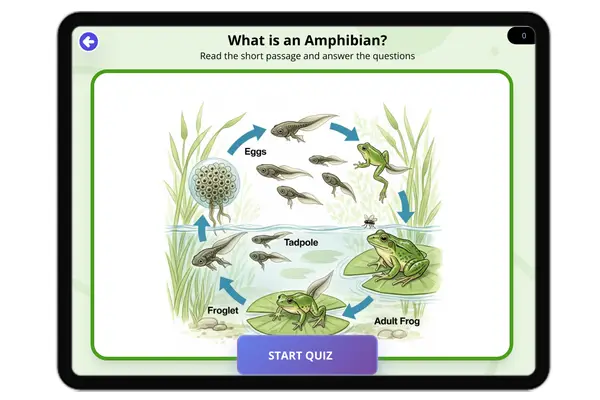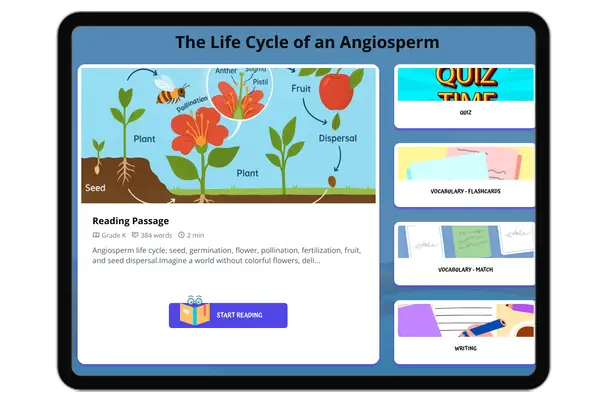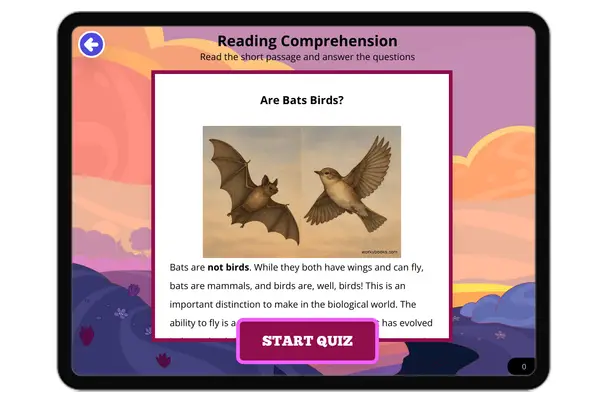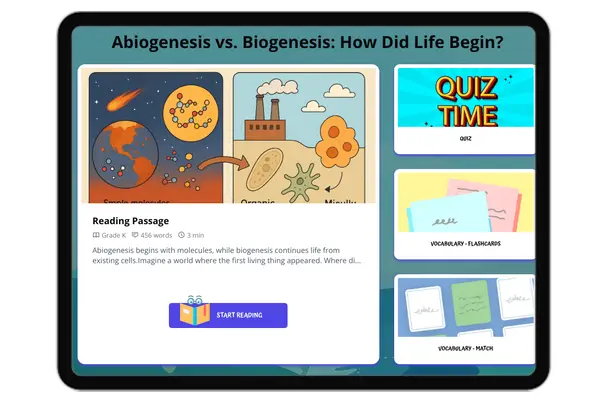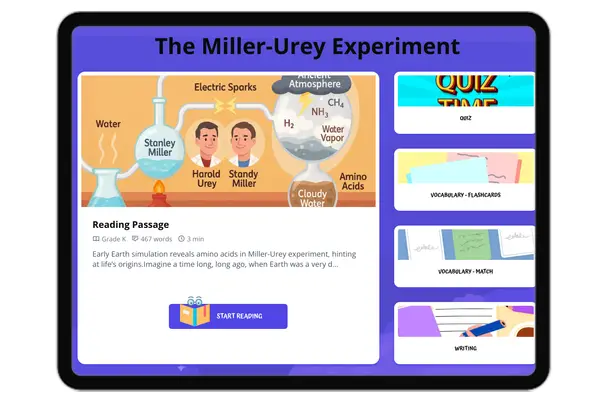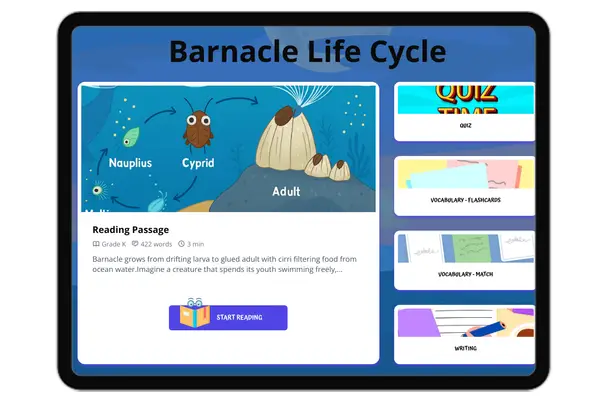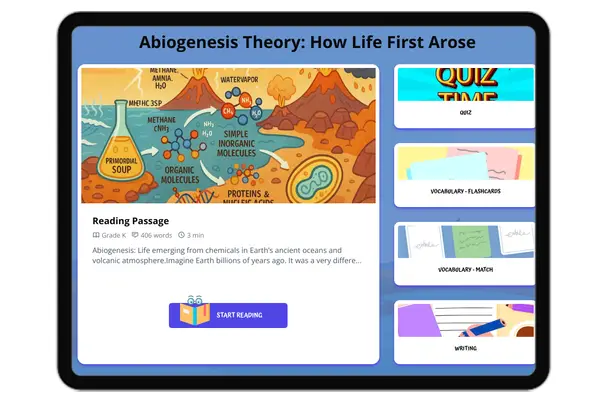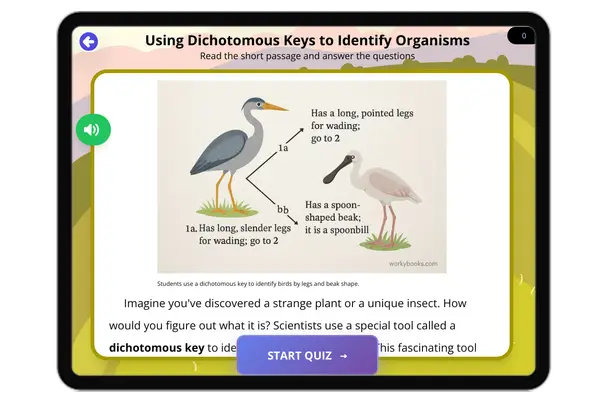Are Whales Fish? — Reading Comprehension
Premium Resource
Grades
- 3
- 4
- 5
- 6
- 7
- 8
PRINT+DIGITAL RESOURCE
This learning resource is available in interactive and printable formats. The interactive worksheet can be played online and assigned to students. The Printable PDF version can be downloaded and printed for completion by hand.
About This Reader
This reading passage, "Are Whales Fish?", explores the biological differences between whales and fish, a common misconception for middle school students. The passage explains key concepts like endothermy, gills vs. lungs, and live birth vs. egg-laying, aligning with NGSS standards related to classification and adaptation (MS-LS2-1, MS-LS4-2). It introduces the concept of convergent evolution to explain why unrelated species can have similar physical features. Designed for a Grade 6-8 audience, this content includes a reading passage, multiple-choice questions for comprehension, and an answer key. The goal is to provide a solid foundation for understanding animal classification and adaptation to different environments, making it a valuable resource for science teachers and students.
Perfect For:
👩🏫 Teachers
- • Reading comprehension practice
- • Auto-graded assessments
- • Literacy skill development
👨👩👧👦 Parents
- • Reading practice at home
- • Comprehension improvement
- • Educational reading time
🏠 Homeschoolers
- • Reading curriculum support
- • Independent reading practice
- • Progress monitoring
Reading Features:
📖
Reading Passage
Engaging fiction or nonfiction text
❓
Comprehension Quiz
Auto-graded questions
📊
Instant Feedback
Immediate results and scoring
📄
Printable Version
Download for offline reading
🔊
Read Aloud
Voice-over with word highlighting


